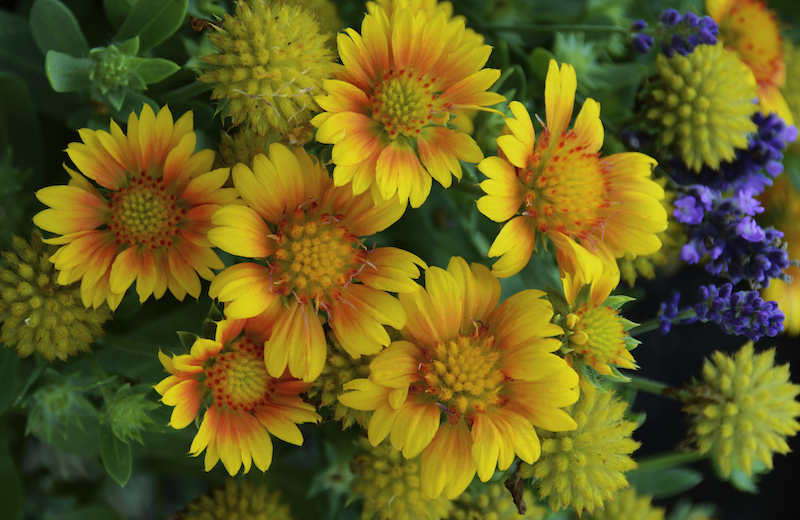Blanket flowers are native plants and generally do not require fertilization. They prefer poor, sandy soil over rich, moisture-retentive soil types. You can provide a light feeding in spring to jumpstart growth, but go easy on the nitrogen and apply any formula sparingly.

How to Fertilize Blanket Flower
Blanket flowers prefer somewhat acidic soil, with a pH between 5.5 and 7.0. If the soil is too alkaline, you can adjust the pH by adding sulfur to lower it. Gaillardia prefers poor soil and does not require much fertilizer. You can apply a light feeding with a balanced, slow-release formula in spring, or hold off on feeding altogether. Too much nitrogen will cause leggy growth and less blooming. Err on the side of less when feeding this plant.
Best Time To Fertilize Blanket Flower
The best time to fertilize blanket flower is generally in the spring, as the plant begins to grow actively and will benefit most from the added nutrients. Regarding frequency, it is typically sufficient to fertilize blanket flowers once yearly or not at all. Alternatively, you can apply a light layer of compost around the root zone before new growth starts.

Best Fertilizer For Blanket Flower
Dr. Earth Flower Girl Bud & Bloom Booster is a good fertilizer option for blanket flowers. This product is an all-natural, organic fertilizer formulated to provide a balanced mix of nutrients to flowering plants, including blanket flowers. It has an NPK ratio of 3-9-4, which means it contains 3% nitrogen, 9% phosphorus, and 4% potassium. It is made from a blend of natural and organic ingredients, including alfalfa meal, fish bone meal, feather meal, and beneficial soil microbes. This product is suitable for use in organic gardening practices and is safe for both people and pets.
Another option for blanket flowers is a slow-release fertilizer, such as Osmocote Plus Outdoor and Indoor Smart-Release Plant Food. This product has an NPK ratio of 14-14-14 and is formulated to release nutrients gradually over several months. This can be a good option for blanket flowers, as it helps to ensure a consistent supply of nutrients to the plant without the need for frequent fertilization.
As for Miracle-Gro, it is generally not recommended for use in organic gardening practices, as it contains synthetic chemicals that may not be safe for people or the environment. Additionally, using such a high-nitrogen fertilizer for blanket flowers is generally unnecessary, as this can encourage excessive leafy growth at the expense of flowers.
Blanket Flower Fertilizing Tips
- Blanket flower prefers a slightly acidic pH.
- Perform a soil test to determine which nutrients are lacking in the soil. Then, choose a fertilizer with the appropriate balance of nutrients to address deficiencies. Often, blanket flower grows well with little to no fertilizer.
- Avoid over-fertilizing or applying too much fertilizer at once. This can lead to leggy growth and fertilizer burn or other damage to the plant. When in doubt, hold off on feeding because blanket flowers do not require many nutrients.
- Water the plant thoroughly before and after fertilizing to help the nutrients reach the roots. Be sure to apply the fertilizer to the plant's root zone, and avoiding getting it on the foliage.
- Consider using a slow-release fertilizer to provide a consistent supply of nutrients to the plant over an extended period. This can help to minimize the risk of over-fertilization.
Warnings
-Always wear protective gloves and a face mask when handling chemical fertilizers.
-Closely follow all directions and storage guidelines that are on the fertilizer label.
 |
Author Chris Link - Published 1-29-2023 |
